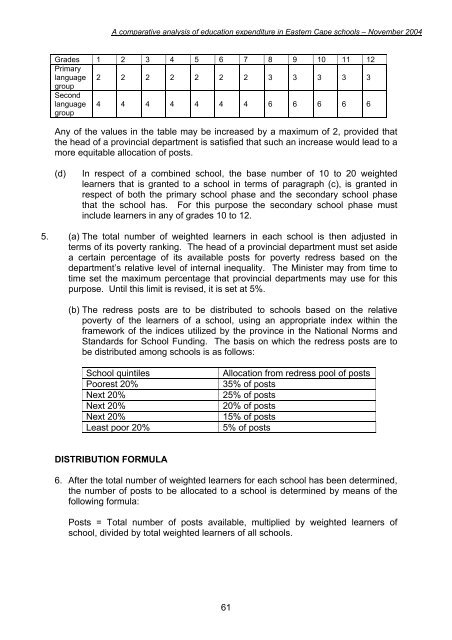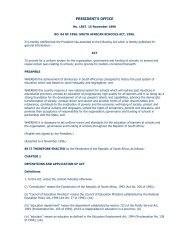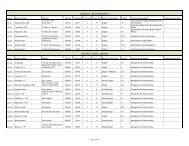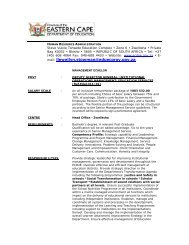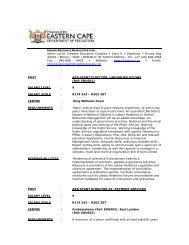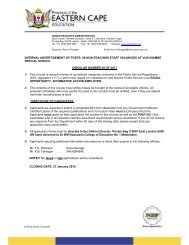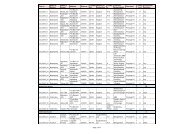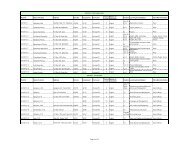School Community Integration Pilot Project - Department of Education
School Community Integration Pilot Project - Department of Education
School Community Integration Pilot Project - Department of Education
You also want an ePaper? Increase the reach of your titles
YUMPU automatically turns print PDFs into web optimized ePapers that Google loves.
A comparative analysis <strong>of</strong> education expenditure in Eastern Cape schools – November 2004<br />
Grades 1 2 3 4 5 6 7 8 9 10 11 12<br />
Primary<br />
language 2 2 2 2 2 2 2 3 3 3 3 3<br />
group<br />
Second<br />
language<br />
group<br />
4 4 4 4 4 4 4 6 6 6 6 6<br />
Any <strong>of</strong> the values in the table may be increased by a maximum <strong>of</strong> 2, provided that<br />
the head <strong>of</strong> a provincial department is satisfied that such an increase would lead to a<br />
more equitable allocation <strong>of</strong> posts.<br />
(d)<br />
In respect <strong>of</strong> a combined school, the base number <strong>of</strong> 10 to 20 weighted<br />
learners that is granted to a school in terms <strong>of</strong> paragraph (c), is granted in<br />
respect <strong>of</strong> both the primary school phase and the secondary school phase<br />
that the school has. For this purpose the secondary school phase must<br />
include learners in any <strong>of</strong> grades 10 to 12.<br />
5. (a) The total number <strong>of</strong> weighted learners in each school is then adjusted in<br />
terms <strong>of</strong> its poverty ranking. The head <strong>of</strong> a provincial department must set aside<br />
a certain percentage <strong>of</strong> its available posts for poverty redress based on the<br />
department’s relative level <strong>of</strong> internal inequality. The Minister may from time to<br />
time set the maximum percentage that provincial departments may use for this<br />
purpose. Until this limit is revised, it is set at 5%.<br />
(b) The redress posts are to be distributed to schools based on the relative<br />
poverty <strong>of</strong> the learners <strong>of</strong> a school, using an appropriate index within the<br />
framework <strong>of</strong> the indices utilized by the province in the National Norms and<br />
Standards for <strong>School</strong> Funding. The basis on which the redress posts are to<br />
be distributed among schools is as follows:<br />
<strong>School</strong> quintiles<br />
Poorest 20%<br />
Next 20%<br />
Next 20%<br />
Next 20%<br />
Least poor 20%<br />
Allocation from redress pool <strong>of</strong> posts<br />
35% <strong>of</strong> posts<br />
25% <strong>of</strong> posts<br />
20% <strong>of</strong> posts<br />
15% <strong>of</strong> posts<br />
5% <strong>of</strong> posts<br />
DISTRIBUTION FORMULA<br />
6. After the total number <strong>of</strong> weighted learners for each school has been determined,<br />
the number <strong>of</strong> posts to be allocated to a school is determined by means <strong>of</strong> the<br />
following formula:<br />
Posts = Total number <strong>of</strong> posts available, multiplied by weighted learners <strong>of</strong><br />
school, divided by total weighted learners <strong>of</strong> all schools.<br />
61


